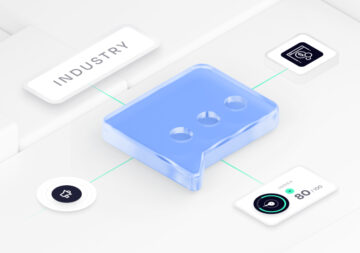The cookieless future is coming, and with it comes a challenge for marketers: how to measure performance in an environment where user data can no longer be tracked. Fortunately, there are ways to accurately measure success even in cookieless environments—but they require an understanding of the new context of cookieless digital marketing.
In this complete guide to cookieless performance measurement, we’ll cover the basics of cookieless marketing and how to measure success without relying on cookies. We’ll also explore methods for contextual measurement—a technique that can be used to accurately determine user preferences and behavior even in cookieless environments.
Additionally, we’ll discuss how to track campaign performance in a cookieless world using techniques such as creating an ML pipeline with collected customer data and running incrementality tests.

What is the Cookieless World?
Before we delve into cookieless performance measurement, let’s take a step back and define what cookieless marketing means. Simply put, cookieless is any digital marketing activity that does not use cookies to collect user data. This includes browsers like Safari, Firefox, and Edge that have implemented cookie restrictions on their platforms or users who explicitly block cookies on their browsers.
Suppose you’re marketing your contact center cloud solutions to software developers. Your cookieless marketing activities may include organic search campaigns, incremental placements outside of major search engines, paid social media campaigns, and traditional offline advertising such as radio or print ads.
Reasons Businesses Are Switching to Cookieless Marketing
Now that we’ve discussed cookieless marketing, let’s talk about why businesses are transitioning away from cookies:
Earn customer trust
Cookieless marketing can be especially appealing to advertisers who are looking to build trust with their customers and demonstrate their commitment to respecting customer privacy. With the introduction of GDPR and other privacy regulations, consumers are increasingly concerned about how businesses use their data. Advertisers who can show that they are taking a transparent, cookieless approach to advertising may be more likely to earn the trust of their customers.
Let’s say you’re testing agile methodology for your business. Cookieless marketing could help you build trust and demonstrate that you respect your customers’ privacy.
Provide customers with more control
Cookieless marketing gives customers the option to opt out of certain ads and provides them with more control over their data. This not only helps build trust but also provides customers with a better experience.
First-party data is on the rise
Cookieless marketing encourages businesses to rely more on first-party data collected directly from customers and not through third parties. The same applies to relying on contextual targeting more. This has the potential to provide more accurate insights into customer behavior and preferences.
For example, if you want to do some localization testing with your website, cookieless marketing would allow you to test different site variations in different regions based on first-party data. Or, if you want to measure the success of a new product launch, cookieless marketing would help you track customer behaviors through surveys and other first-party data sources.
TIP: Zeropark offers no-third-party data solutions and can be a valuable resource for advertisers looking to advertise in a safe and compliant manner.
The growing list of rules and regulations
Cookieless marketing also helps businesses stay compliant with ever-changing privacy regulations. For example, GDPR compliance mandates that businesses obtain customer consent before collecting data and must be transparent about how their data is used.
Cookieless marketing provides a solution to these requirements, as it does not rely on cookies or third-party tracking technology.
How to Track Campaign Performance in a Cookieless World
Let’s dive into the cookieless performance measurement techniques. The key to cookieless tracking is understanding and leveraging contextual data. Here are some ways you can do that:
Take advantage of your partners’ first-party data
As mentioned before, cookieless marketing encourages the use of first-party data. So one way to measure cookieless performance is to ask your partners for their first-party data and then analyze it to determine user preferences and trends. According to Advertiser Perceptions, 88% of marketers are using first-party data to identify and measure their audiences.
Some first-party data you may consider collecting include customer survey data, user reviews and comments, website visits, etc. This type of data can give you a high-level understanding of how customers respond to your cookieless campaigns.
For example, suppose you’re doing beta testing in a software from Global App Testing. In that case, you could ask them for feedback from their customer surveys to better understand how customers feel about the cookieless performance.
Use your brand metrics
Another way to measure cookieless performance is to use your brand metrics such as brand awareness, customer satisfaction, and loyalty. These metrics can help you evaluate the success of a cookieless campaign by measuring how customers feel about your product or service over time.
Web metrics can also be used to measure cookieless performance. This includes the number of visitors, page views, and conversions. By tracking these metrics, you can gain insight into how cookieless campaigns are affecting your website traffic and conversions.
According to Insider Intelligence, 36% of marketers believe that a customer’s purchase history is the most valuable source of data in a cookieless world. So tracking customer purchases is another way to measure the performance of your cookieless campaigns. The same study found that 32% of marketing professionals see social media profiles as their most valuable source of data in a cookieless world. So leveraging your brand’s presence on social media is also another way to measure the success of your campaigns.
Create your own ID graph with collected customer data
An ID graph is a tool that helps you better understand individual customer journeys. It tracks customer behavior and provides insights into how cookieless campaigns impact user engagement.
You can create your own ID graph by collecting customer data such as website visits, app downloads, and purchase history. This data can then be used to track the journey of individual customers and gain insight into cookieless performance.
Reporting from your advertising solutions provider
The technology around cookieless performance measurement is evolving quickly. But a way to stay up-to-date is to fully trust your chosen advertising solution provider, like Zeropark. By launching your campaigns in the safest environments you, as their owner, can not only reach the safest audiences for your brand but also access real-time reporting directly from your dashboard.
And what is more, should you require an even deeper analysis, the tracking solution integrations are more intuitive than ever, giving you access to granular performance data, analytics, and insights. All without sacrificing data privacy, but by targeting your purchase-ready audiences contextually.
Run incrementality tests
Incrementality testing is one of the most effective cookieless performance measurement techniques. It helps you understand how cookieless campaigns affect user engagement, conversion rates, and revenue.
To compare results, the process involves running two separate experiments with two sets of users—a test group and a control group. This will help you see which cookieless campaigns are most effective and which need improvement.
Five Tips in Preparing For Cookieless Marketing
Now that you know how to measure cookieless performance, here are five marketing tips for preparing for cookieless marketing:
1. Capitalize on the data that you already have
Cookieless marketing heavily relies on first-party data. So it’s important to ensure that you’re taking full advantage of the data you already have. This can include customer survey data, website visits, and app downloads.
2. Inspect your current technology and update your stack
Make sure that your technology is up-to-date so that it can support cookieless marketing. Look for any outdated tools and upgrade them as necessary.
3. Orient and train your team for the upcoming transition
Make sure your team is aware of the changes that are coming and equip them with the skills they need to succeed in a cookieless world. Trust your partnering compliance teams to be well-versed in the new regulations to ensure that your campaigns adhere to the rules.
4. Use a unified marketing measurement for your paid media
A unified marketing measurement approach can accurately track your paid media performance. This means using a single source of truth for all your data and metrics across channels. For example, if you’re marketing a new product, you should track metrics such as clicks, impressions, and conversions.
5. Focus on personalization
Cookieless marketing relies heavily on personalization. This means understanding customer preferences and catering to them in order to create a better user experience. Make sure that you’re providing personalized content, targeted ads, and relevant offers for your customers.
To do this, you’ll need to analyze customer data and use it to create personalized experiences. This could include gathering customer profiles, understanding customer behavior, and using machine learning algorithms to optimize campaigns.
Conclusion
As more and more people opt out of cookies, it’s important to have the right tools in place to measure performance in a cookieless world. By leveraging advanced tracking solutions, running incrementality tests, and personalizing campaigns, you can effectively measure performance without sacrificing data privacy.
With the right preparation and strategy, your business can thrive even in the cookieless era. By following these tips, you can set yourself up for success in the cookieless world and measure performance more accurately than ever before. Good luck!
Łukasz Pośpiech


